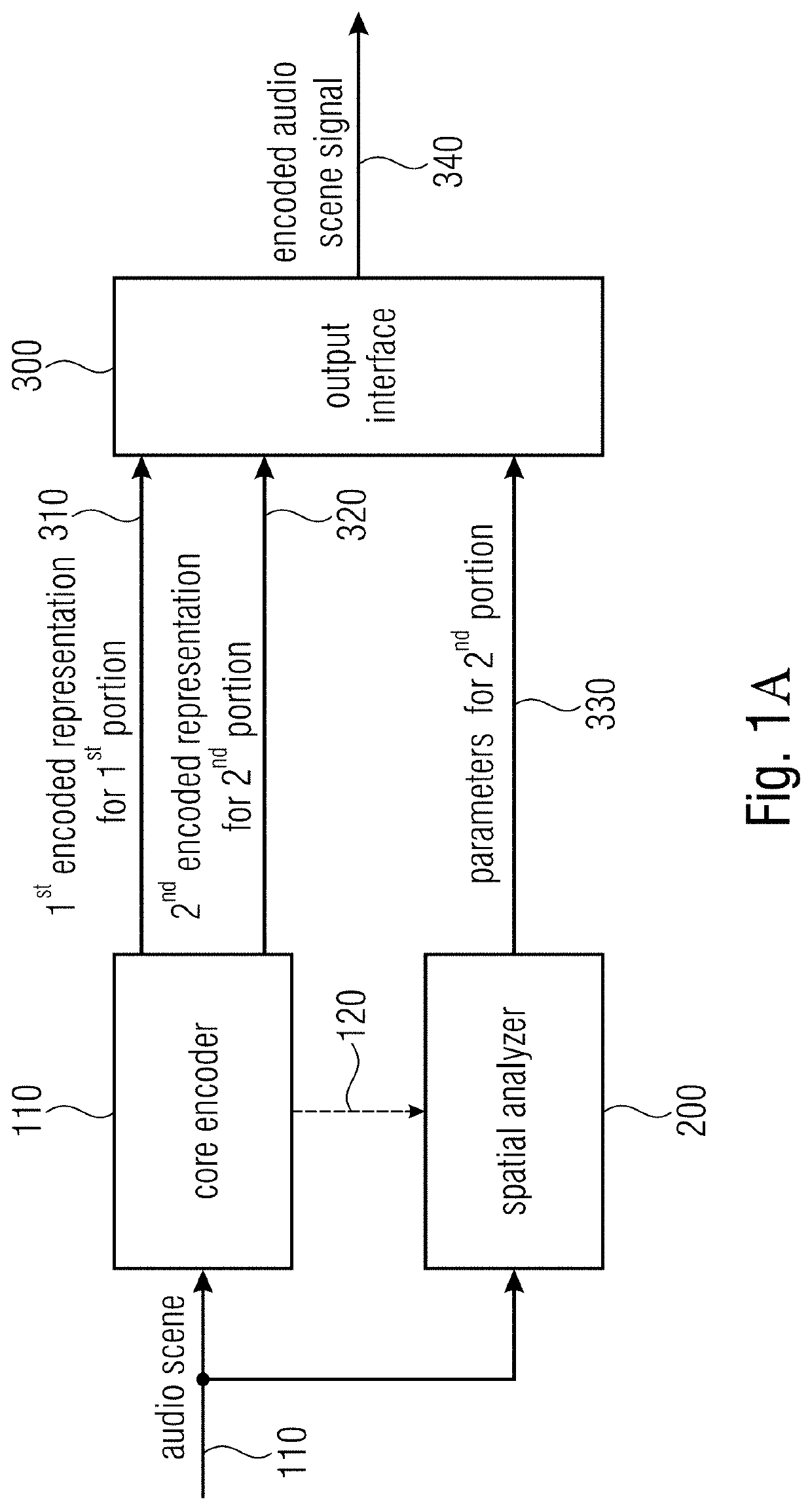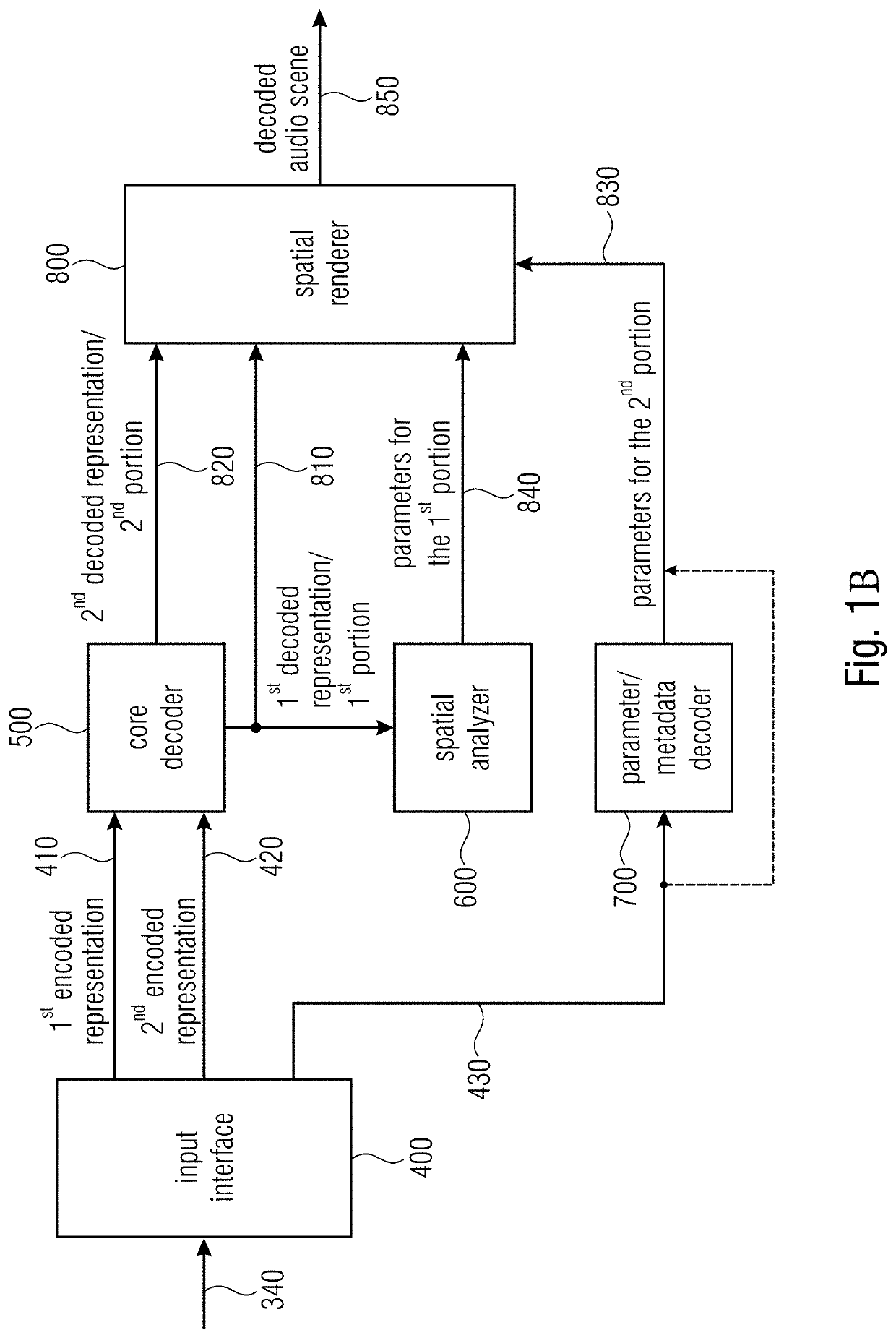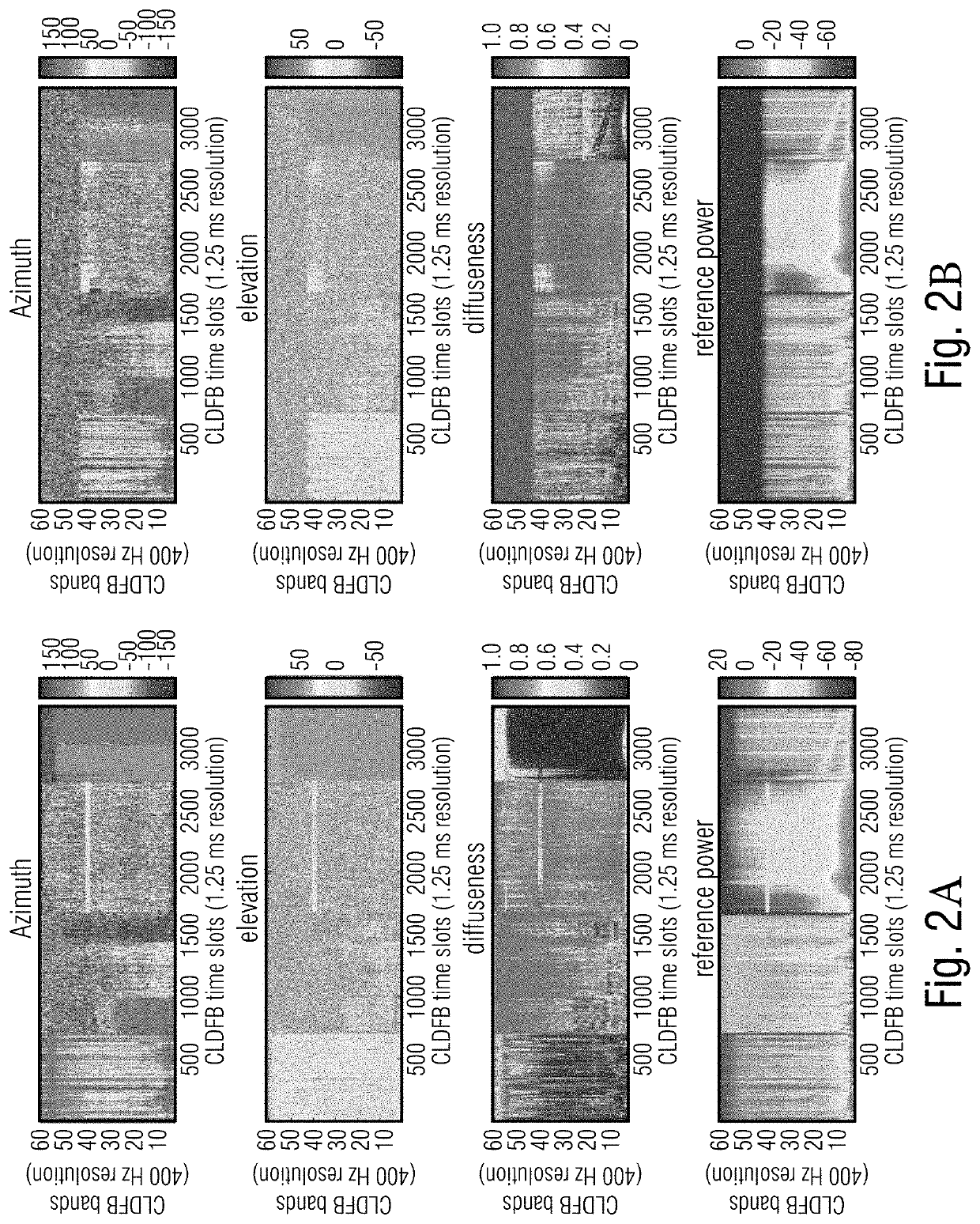Audio scene encoder, audio scene decoder and related methods using hybrid encoder-decoder spatial analysis
a spatial analysis and encoder technology, applied in the field of audio encoding or decoding, can solve the problems of limiting the time and frequency resolution of transmitted parameters, single channel of audio transmission, and the possibility of core encoding the second portion with less accuracy or typically less resolution, etc., to achieve low resolution, reduce bitrate, and reduce the effect of bitra
- Summary
- Abstract
- Description
- Claims
- Application Information
AI Technical Summary
Benefits of technology
Problems solved by technology
Method used
Image
Examples
Embodiment Construction
[0066]FIG. 1A illustrates an audio scene encoder for encoding an audio scene 110 that comprises at least two component signals. The audio scene encoder comprises a core encoder 100 for core encoding the at least two component signals. Specifically, the core encoder 100 is configured to generate a first encoded representation 310 for a first portion of the at least two component signals and to generate a second encoded representation 320 for a second portion of the at least two component signals. The audio scene encoder comprises a spatial analyzer for analyzing the audio scene to derive one or more spatial parameters or one or more spatial parameter sets for the second portion. The audio scene encoder comprises an output interface 300 for forming an encoded audio scene signal 340. The encoded audio scene signal 340 comprises the first encoded representation 310 representing the first portion of the at least two component signals, the second encoder representation 320 and parameters ...
PUM
 Login to View More
Login to View More Abstract
Description
Claims
Application Information
 Login to View More
Login to View More - R&D
- Intellectual Property
- Life Sciences
- Materials
- Tech Scout
- Unparalleled Data Quality
- Higher Quality Content
- 60% Fewer Hallucinations
Browse by: Latest US Patents, China's latest patents, Technical Efficacy Thesaurus, Application Domain, Technology Topic, Popular Technical Reports.
© 2025 PatSnap. All rights reserved.Legal|Privacy policy|Modern Slavery Act Transparency Statement|Sitemap|About US| Contact US: help@patsnap.com



